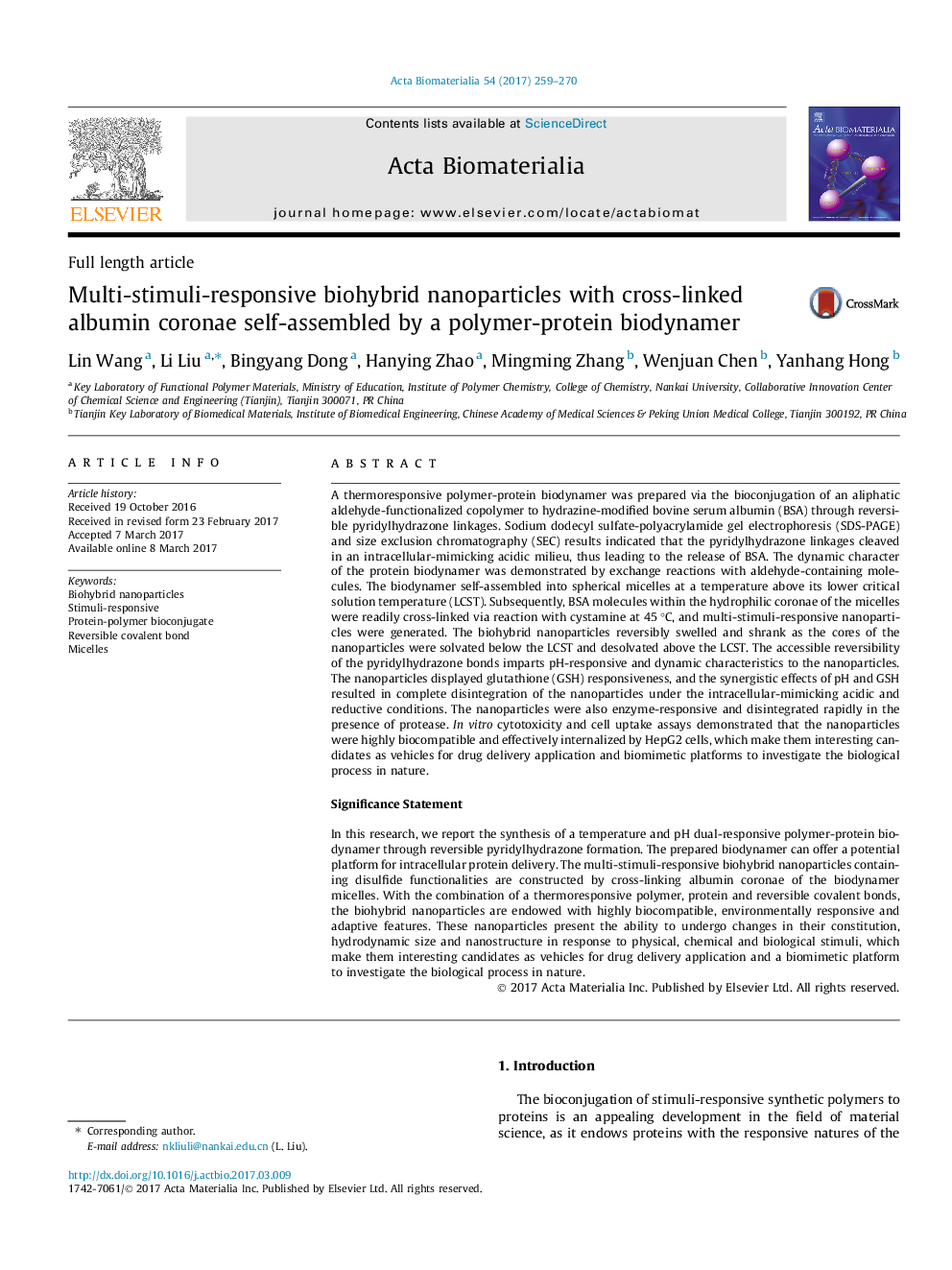| Article ID | Journal | Published Year | Pages | File Type |
|---|---|---|---|---|
| 6449320 | Acta Biomaterialia | 2017 | 12 Pages |
A thermoresponsive polymer-protein biodynamer was prepared via the bioconjugation of an aliphatic aldehyde-functionalized copolymer to hydrazine-modified bovine serum albumin (BSA) through reversible pyridylhydrazone linkages. Sodium dodecyl sulfate-polyacrylamide gel electrophoresis (SDS-PAGE) and size exclusion chromatography (SEC) results indicated that the pyridylhydrazone linkages cleaved in an intracellular-mimicking acidic milieu, thus leading to the release of BSA. The dynamic character of the protein biodynamer was demonstrated by exchange reactions with aldehyde-containing molecules. The biodynamer self-assembled into spherical micelles at a temperature above its lower critical solution temperature (LCST). Subsequently, BSA molecules within the hydrophilic coronae of the micelles were readily cross-linked via reaction with cystamine at 45 °C, and multi-stimuli-responsive nanoparticles were generated. The biohybrid nanoparticles reversibly swelled and shrank as the cores of the nanoparticles were solvated below the LCST and desolvated above the LCST. The accessible reversibility of the pyridylhydrazone bonds imparts pH-responsive and dynamic characteristics to the nanoparticles. The nanoparticles displayed glutathione (GSH) responsiveness, and the synergistic effects of pH and GSH resulted in complete disintegration of the nanoparticles under the intracellular-mimicking acidic and reductive conditions. The nanoparticles were also enzyme-responsive and disintegrated rapidly in the presence of protease. In vitro cytotoxicity and cell uptake assays demonstrated that the nanoparticles were highly biocompatible and effectively internalized by HepG2 cells, which make them interesting candidates as vehicles for drug delivery application and biomimetic platforms to investigate the biological process in nature.Significance StatementIn this research, we report the synthesis of a temperature and pH dual-responsive polymer-protein biodynamer through reversible pyridylhydrazone formation. The prepared biodynamer can offer a potential platform for intracellular protein delivery. The multi-stimuli-responsive biohybrid nanoparticles containing disulfide functionalities are constructed by cross-linking albumin coronae of the biodynamer micelles. With the combination of a thermoresponsive polymer, protein and reversible covalent bonds, the biohybrid nanoparticles are endowed with highly biocompatible, environmentally responsive and adaptive features. These nanoparticles present the ability to undergo changes in their constitution, hydrodynamic size and nanostructure in response to physical, chemical and biological stimuli, which make them interesting candidates as vehicles for drug delivery application and a biomimetic platform to investigate the biological process in nature.
Graphical abstractDownload high-res image (108KB)Download full-size image
